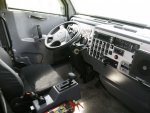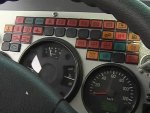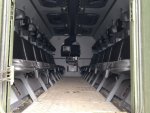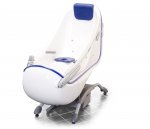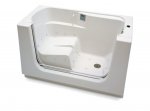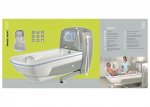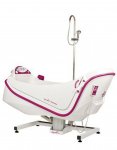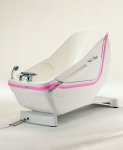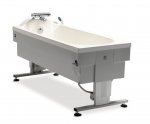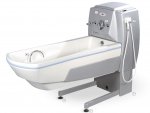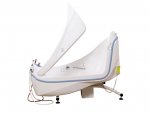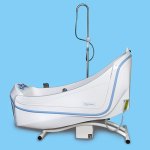Hi Nick,
That is incredibly helpful!!! Many thanks. I still haven't finished all the posts in the previous series, but went ahead and followed up on your lead......
**********************************************
1. "Chinese Six" and "Twin Steer"
**********************************************
There's nothing on wikipedia under "
Chinese Six", which seems unusual. Also nothing about the possible advantages of this axle arrangement on autozine's "technical school" -- see
http://www.autozine.org/technical_school/tech_index.html ,
http://www.autozine.org/technical_school/chassis/Index.html ,
http://www.autozine.org/technical_school/suspension/Index.html .
But there is a huge Flickr
"Chinese Six" photo pool with over 700 images, at
https://www.flickr.com/groups/1895914@N23/pool/ . Both truck and buses. Apart from a few exceptions, most of the photos date back to the 1950's and earlier, i.e. pre-War. And of course using the search terms
chinese six truck ,
chinese six bus , and
chinese six coach will yield lots of images on Google.
Another useful search term is
"Twin Steer". Type in
"Twin Steer" without qualification, and you will get lots of images of 8x8 trucks -- see
twin steer . Qualifying
"Twin Steer" by adding 6x6 doesn't help much -- see
twin steer 6x6 . But
twin steer bus and
twin steer coach yield a huge number of pictures of three-axles buses with two axles up front.
There is no dedicated Flickriver for "twin steer", "twin steer bus", or "twin steer coach" in general. But there are Flickrivers for the Bedford VAL twin steer bus -- see
http://www.flickriver.com/groups/bedfordval/pool/ ,
http://www.flickriver.com/groups/bedfordval/pool/interesting/ ,
http://en.wikipedia.org/wiki/Bedford_VAL ,
http://www.c4p.biz/forum/post/index.htm?t=5593 , and
https://www.youtube.com/watch?v=4gUWlx-LwHY . There are also Flickrivers for
"Twin Steer Truck", but again, most of these are not 6x6's, but rather, 8x8s and larger -- see
http://www.flickriver.com/groups/2614280@N24/pool/ and
http://www.flickriver.com/groups/2614280@N24/pool/interesting/ .
**********************************************
Luckily, we don't have to completely re-invent the wheel when discussing possible advantages to the Chinese Six axle arrangement. Much of that has already been done, in an excellent thread on
TruckNet, at
http://www.trucknetuk.com/phpBB/viewtopic.php?f=35&t=34478 . I read the entire thread, and here is a quick summary of the advantages suggested so far in that thread:
(1) Beer delivery companies liked chinese sixes trucks, because as they unloaded beer kegs from the rear, more of the remaining weight was loaded onto the front axles, but the vehicle would still handle and steer well:
"The layout lends itself well to urban multi-drop of course as it avoids the inherent problem of diminishing payload causing the front axle to become overloaded. "
(2) Before the advent of power steering, it was much easier to turn a big Chinese Six bus with twin axles up front, as opposed to just one steering axle.
(3) Drivers who remember using "Chinese Six" or "Twin Steer" buses will say that they turned corners much better than modern buses with just one axle in front; even with the advent of power steering. So the Chinese Six axle configuration seems to be inherently more maneuverable.
(4) Those who remember using Chinese Six hay trucks on rough, unpaved rural roads, will also say that they were much more maneuverable, stable, and held the road better. Those who do similar work today using 8x8 bulk blowers, will lift the fourth axle to achieve the same result, converting their 8x8s into Chinese Sixes. This makes their work much easier.
(5) 50 years ago engines were still very heavy, and were made of relatively simple kinds of steel. Some of the earliest engine blocks were even made of cast iron. Since then advances in metallurgy have yielded lighter-weight alloy engines. So two axles up front could better support the weight of the very heavy engines of the past.
(6) One participant argued that the driving motivation behind Chinese Sixes was economic. Steer axles weigh less than drive axles. So adding just an additional steer axle up front did not add much to the overall vehicle weight. But it would turn a delivery truck into a three-axle instead of a two axle, thereby allowing greater legal payload weight.
(7) Or, for an even more complicated explanation:
Back in the fifties & early sixties 8 Leggers by law ran at 24t Gross, a normal 6 wheeler ran at 22t Gross and a Chinese 6 ran at 20t Gross. A 4 wheeler at 14t Gross and as a Trailer was normaly a 4 wheeler the trailer was also at 12t Gross with single tyres, A lorry and trailer ran at 32t Gross so a 4 wheeler and trailer grossed out at 26t leaving 6t under max, a 8 wheeler and trailer grossed out at 36t i.e. 4t unusable. The best combination as far as legal weight is concerned is the Chinese 6 and Trailer at 32t, also the cut off rear end made for a better following trailer. If the Trailer had twin wheels it could run at 14t Gross. My first job on leaving School was at Inter-City transport at their London Depot opposite Holloway Womens Prison and I occasionally acted as Trailer Mate. one of their Leyland Steers and Trailers. My next job was with Sutton & Son (St Helens) again at their London Depot where I was a Trailer Mate on Day Shunt on 8 wheeler, Chinese 6's and 4 wheeler and Trailers, and I canassure you the 8 wheeler had the best turning circle of the three as the important measurement is from the centre of the front wheel to the centre of the rear axle or bogie with the shortest all else being equeal i.e. steering lock will have the best turning circle. By the way tha standard length for general haulage 8 wheelers would be 30ft (24ft) platform and a Chinese 6 would be 2ft shorter.
(8) So a Chinese Six axle configuration also made for a better following trailer:


Perhaps that's why Tatra designed its 813 Ballast Tow Tractors this way?
(9) In Italy during the 1950's and 1960's many more 6-wheeler Chinese Sixes were towing trailers than 8 wheelers. Chinese sixes were also popular in Spain, and apparently in
China itself today there are lots of chinese sixes on the roads:
....if you want to spot Chinese sixes - go to China!
Again, see
http://www.trucknetuk.com/phpBB/viewtopic.php?f=35&t=34478 .
**********************************************
2. Questions about Tatra Chinese Sixes and Typhoons
**********************************************
Of course, this still doesn't answer many of the questions that I began asking in the previous series of posts. For instance:
(A) Why are old Tatra 813 "Chinese Sixes" now so popular for European truck trials? Mainly because of their Chinese Six axle configuration? Or for some other reason? Perhaps because they have incredible transmissions, transmissions able to handle very heavy haulage? With multiple ultra-low-speed, super-high-torque crawler gears?
(B) Why did Kamaz opt for a Chinese Six axle configuration for the Typhoon?
To state the obvious: equivalent contemporary 3-axle trucks made by Oshkosh, MAN, and Tatra do not have Chinese Six axle configurations. The Oshkosh FMTV, the MAN SX-44, and the Tatra 815 6x6 all have more conventional axle arrangements:





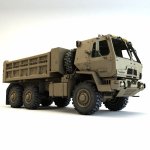 ***********************************************
***********************************************
CONTINUED IN NEXT POST
.




















